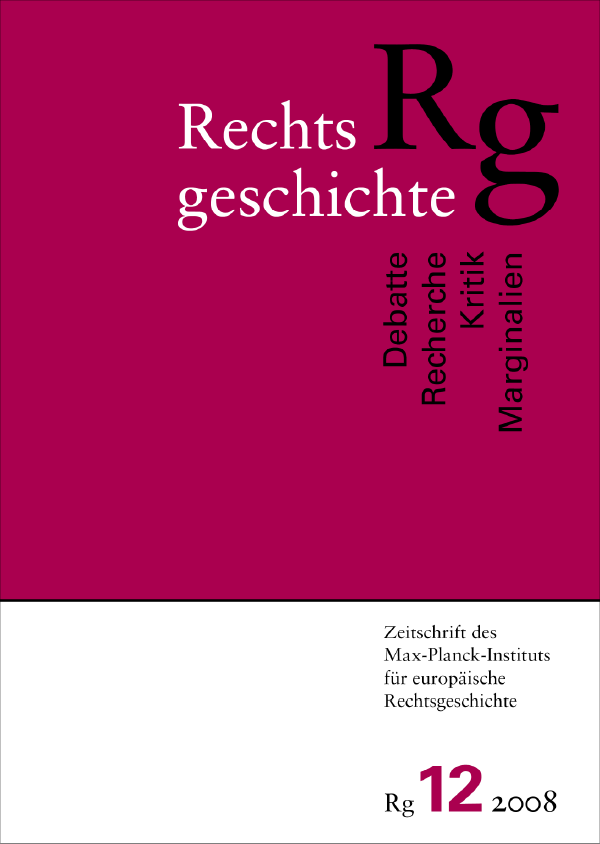Form and content in early modern legal books
Bridging the gap between material bibliography and the history of legal thought
DOI:
https://doi.org/10.12946/rg12/012-050Abstract
According to common sense, a book is only a way of conveying communicative contents (namely, ideas): on their own, books cannot change or add anything to what authors think about what they want to communicate to readers. The most recent history of books produced a Copernican shift in such a simplistic view about the nature of these (un)faithful companions of writers and readers. Books – as objects, as material devices, with their specific features – do matter in intellectual maturation and dialogue. Their materiality – like page layout, typographical devices, graphics, format, even binding – does convey sense. The article tries to relate intellectual shifts in early modern legal theory to concrete changes in the physical format of law books. The article seeks to call into question the central position that traditional legal history usually gives to an individual ›author‹ – asking once again the disturbing question posed by Michel Foucault: ›What is an author?‹ – and challenges the concept of a merely intellectual evolution of new figures of legal discourse.
Downloads
Veröffentlicht
Zitationsvorschlag
Ausgabe
Rubrik
Lizenz
Copyright (c) 2008 Autor/in

Dieses Werk steht unter einer Creative Commons Namensnennung - Nicht-kommerziell - Keine Bearbeitung 3.0 International -Lizenz.





